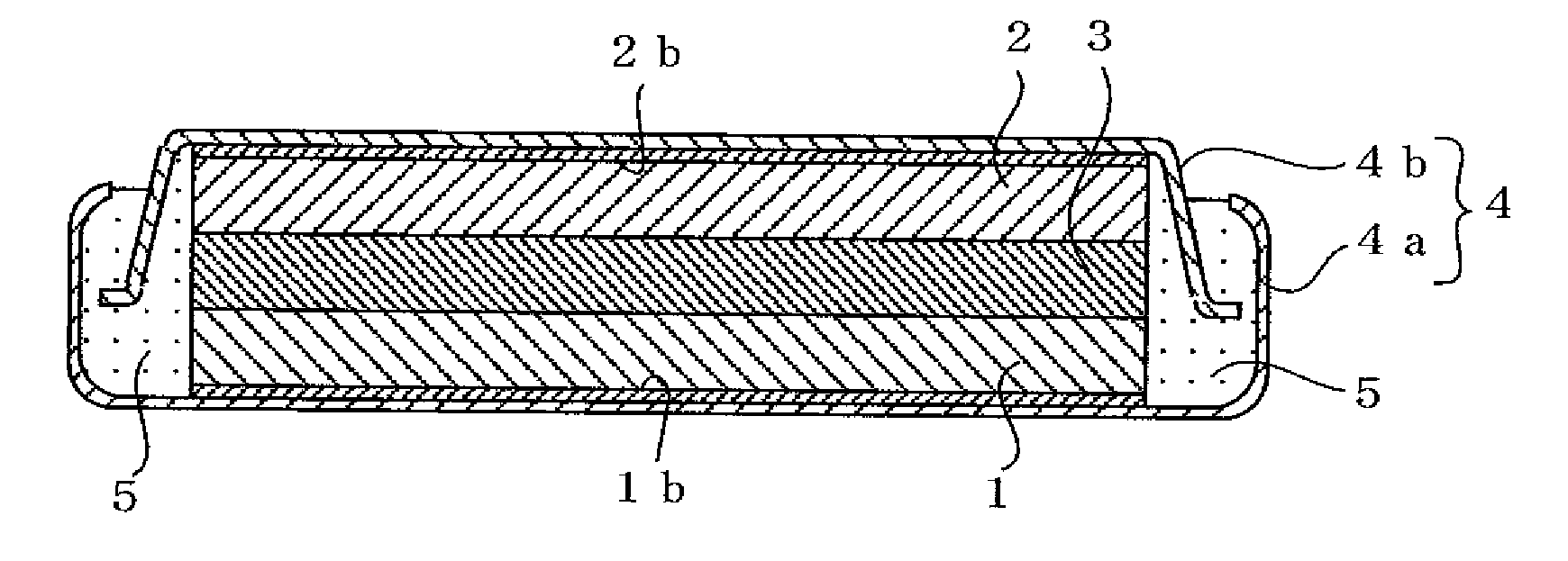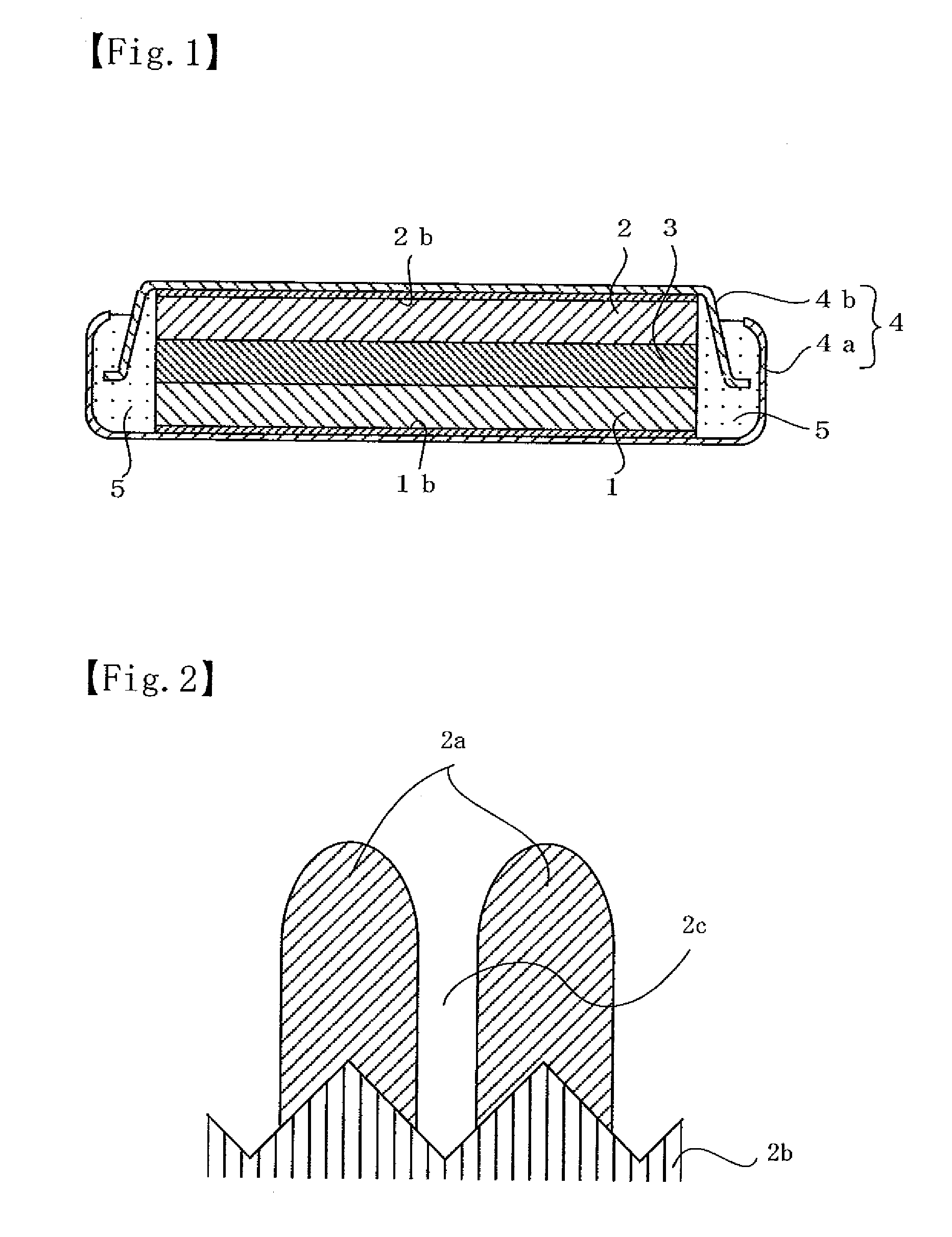Non-aqueous electrolyte secondary battery and non-aqueous electrolyte
- Summary
- Abstract
- Description
- Claims
- Application Information
AI Technical Summary
Benefits of technology
Problems solved by technology
Method used
Image
Examples
example 1
[0071] In Example 1, a flat coin-shaped non-aqueous electrolyte secondary battery illustrated in FIG. 1 was fabricated by preparing a negative electrode and a positive electrode and adjusting a non-aqueous electrolyte in the following manner.
Preparation of Negative Electrode
[0072] A negative electrode was prepared as follows. A thin film of negative electrode active material consisting of silicon thin film having a thickness of about 5 μm is formed on a negative electrode current collector consisting of an electrolyte copper foil (thickness=18 μm, surface roughness Ra=0.188 μm) by an RF sputtering. The RF sputtering was carried out on the condition that a sputter gas flow Ar was 100 sccm, a substrate temperature was a room temperature (without heating), a reactive pressure was 0.133 Pa (1.0×10−3 Torr) and a high frequency electricity was 200 W.
[0073] According to a result of analysis of the silicon thin film by Raman spectroscopy, the peak value near 480 cm−1 was detected, but t...
example 2
[0078] In Example 2, a non-aqueous electrolyte secondary battery of Example 2 was fabricated in the same manner as Example 1 except that the type of non-aqueous electrolyte was changed from that of Example 1.
[0079] Example 2 took the same procedure as Example 1, except that 2 mass % of fluoromethyl methyl carbonate was added as the compound expressed by the general formula (I), in place of fluoro ethylene carbonate in Example 1, in preparation of the non-aqueous electrolyte.
example 3
[0080] In Example 3, a non-aqueous electrolyte secondary battery of Example 3 was fabricated in the same manner as Example 1 except that the type of non-aqueous electrolyte was changed from that of Example 1.
[0081] Example 3 took the same procedure as Example 1, except that 2 mass % of 2-fluoroethyl methyl carbonate was added as the compound expressed by the general formula (I), in place of fluoro ethylene carbonate in Example 1, in preparation of the non-aqueous electrolyte.
PUM
 Login to view more
Login to view more Abstract
Description
Claims
Application Information
 Login to view more
Login to view more - R&D Engineer
- R&D Manager
- IP Professional
- Industry Leading Data Capabilities
- Powerful AI technology
- Patent DNA Extraction
Browse by: Latest US Patents, China's latest patents, Technical Efficacy Thesaurus, Application Domain, Technology Topic.
© 2024 PatSnap. All rights reserved.Legal|Privacy policy|Modern Slavery Act Transparency Statement|Sitemap



